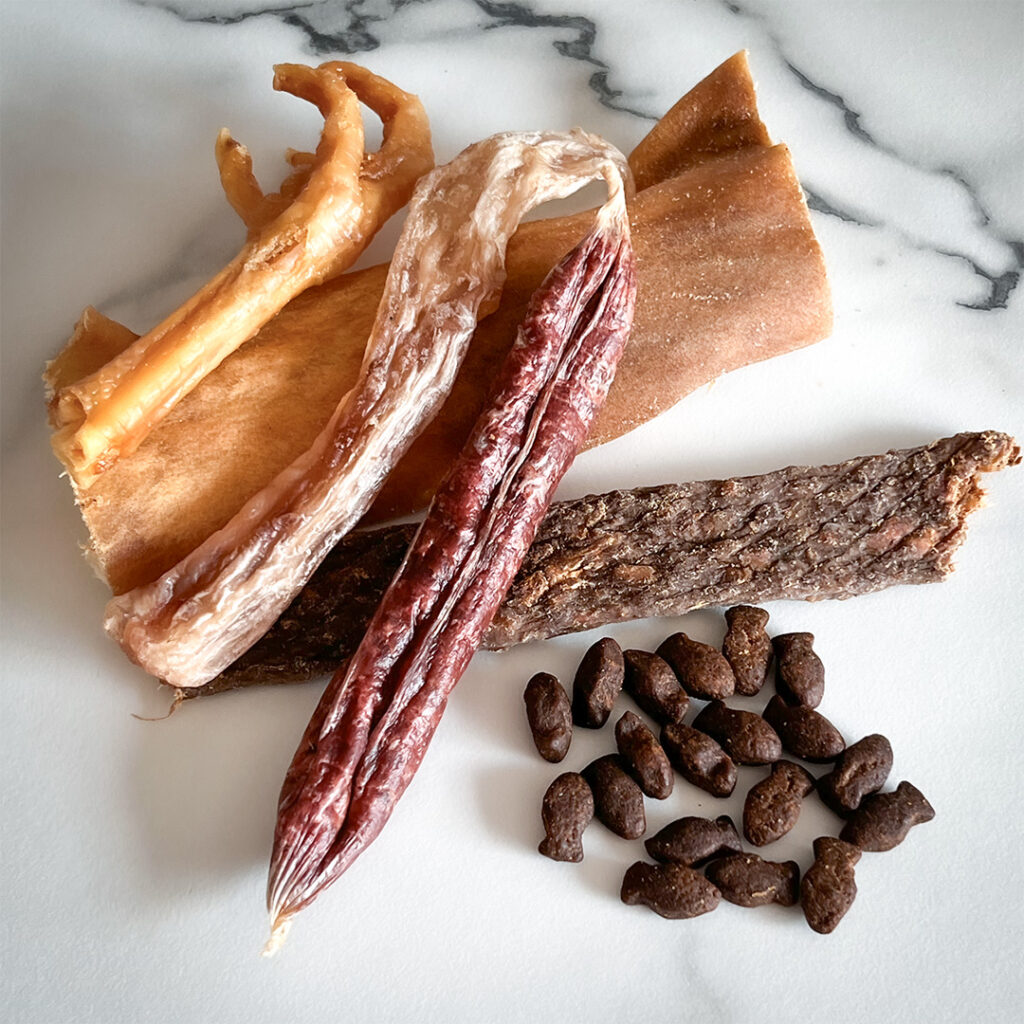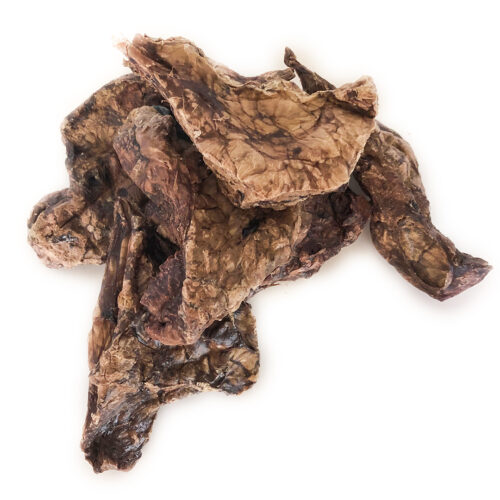Simple Diet Rules For Dogs
Whenever someone says ‘simple’ we know its going to be complicated. Please consult your vet if you have any concerns about your dogs health.
Especially if weight gain or weight loss is present. It may be worth mentioning at this early point that calorie calculators for dogs do not replace common sense. That said a good dog food & health app that keeps records (if you’re into recording everything) are available.
So for the sake of simplicity the first section of this is simple – almost like common sense rules of thumb!
You know the ones, eat less, move more and you’ll lose weight :) And for dogs – don’t over feed, dogs are little monkeys and know how to work us with their puppy eyes.
Here’s the deceptively simple formula for working out calories needed by weight: =70*(kg Bodyweight) ^0.75
So with the ‘simple’ out of the way lets get complicated!
With so many ‘credible’ authoritative articles out there that refer to their own brand of food exclusively its easy to become confused.
Bella a Juke for example almost certainly calculate the calorie intake for dogs if the dog eats their food. But the same calculation will be inaccurate for other food types.
Raw diets may be more tuned in to the quoted calculation by Bella and Duke Dog foods article. “average adult dog should be fed 2-3% of its body weight in raw food” and whilst they recognise this varies from breed to breed and age and weight its just possible for it to be misleading.
Here are a few points to consider:
- Activity Level: More active dogs may require more food to maintain their energy level, while less active dogs might need less to avoid weight gain.
- Age and Life Stage: Puppies, for instance, generally require more calories and nutrition per pound of body weight compared to adult dogs because they are growing. Conversely, older dogs might need fewer calories if they are less active.
- Health Status: Dogs with certain health conditions might require adjustments in their diet. For example, a dog with a specific illness or metabolic issue might need a special feeding regimen.
Try to monitor your dog’s weight and overall health and adjust their diet as needed.
Consult your vet (not all are experienced with raw diets) so they can provide guidance tailored to your dog’s specific needs.
Obviously we want the best for our dogs to ensure their diet supports good health and well-being. So don’t get consumed with information that is merely making a point that things can be made more complicated than they are.
Our family dog 40 years ago was feed on a diet of tinned Pal and ate weetabix for breakfast, warm milk in the winter, I’m not joking! Our dog lived to 14 and had a great life except for the time he ran off (its a boy dog thing!) and we didn’t find him for 6 weeks. But thats another story when there was no GPS trackers and internet! Right back to the food by weight or by calorie! We don’t want to be distracted by the average life expectancy of dogs falling.
Switching to Natural Treats
Upgrade your dog’s snacking experience by switching from processed supermarket treats to 100% air-dried natural treats. These wholesome, minimally processed options offer a healthier alternative, packed with real flavours and nutrients to keep your furry friend happy and thriving. Treat your dog to the best!
Health Benefits of 100% Air-Dried Natural Treats
- Natural Ingredients: Made from whole, real foods without artificial additives or preservatives.
- Nutrient-Rich: Retains essential vitamins, minerals, and proteins, promoting overall health.
- Easier Digestion: Gentle on your dog’s digestive system, reducing the risk of upset stomachs.
- Low-Calorie Option: Generally lower in calories compared to processed treats, helping to maintain a healthy weight.
- Better Dental Health: Chewing on natural treats can help clean teeth and reduce plaque buildup.
A Few of Boodles low fat treats
-
White fish and herb Slices – training treat
£6.00 – £18.00 Select options This product has multiple variants. The options may be chosen on the product page -
Air Dried Beef Lung Dog Chew For Dogs
£5.28 – £13.64 Select options This product has multiple variants. The options may be chosen on the product page
Boodles White Fish and herb slices are amazing training treats and little reward bites. They are super low in fat – approximately 1% & just 256 kCal per 100g.
They are also a rich source of Omega 3 fatty acids. Important for supporting healthy joints, coats, skin, heart and eyes. Omega 3 also aids brain development, helping focus, memory and behaviour.
Feeding by weight or by Calorie
The main problem with the calculation by Bella and Duke is its based on a weight calculation and not a calorie. A calorie calculation is based on a recognised formula of body weight X 70 which is very different to a 2 -3 % volume of food calculated by weight of the dog.
There might be a fundamental issue with how these calculations align or don’t align, rather than just differences in assumptions about activity levels or diet composition.
The discrepancy between the metabolic formula and the percentage of body weight method for determining daily caloric intake in dogs could present confusion for dog owners. Some dogs will just keep eating their own body weight if given the choice.
Here’s a deeper look at potential fundamental flaws or issues in these calculation methods:
Caloric Density Assumptions: The raw feeding guideline that suggests a food intake of 2-3% of body weight. Caloric density can vary dramatically based on the type of meat, fat content, and any added ingredients. Without knowing the exact caloric density of the food, it’s impossible to accurately predict caloric intake. This ambiguity can lead to significant errors in estimating actual calorie provision.
Basal Metabolic Rate (BMR) Formula Limitations: The formula 70 × ( Body Weight in kg ) 0.75 70×(Body Weight in kg) 0.75 is derived from general research on metabolic rates across various species and is a broad estimate. It does not account for individual variances such as breed-specific metabolic rates, age-related metabolic changes (especially in very young or elderly dogs), or health conditions that could affect metabolism.
Generic vs. Individualized Estimates: Both methods provide a starting point rather than a tailored recommendation. Every dog is unique, and factors like genetics, health status, and daily activity can significantly influence actual caloric needs. The formulas do not adapt for these individual variations unless manually adjusted.
Practical Application vs. Scientific Accuracy: Feeding guidelines are often designed for practical use by pet owners and may not reflect the precision required for optimal nutrition. Conversely, scientific formulas like the metabolic rate calculation provide a general framework but may lack the specificity needed for practical, everyday feeding decisions without additional customization.
Lack of Integration of Factors: Neither method integrates all relevant factors affecting a dog’s caloric needs, such as energy expenditure due to exercise or temperature. These factors can substantially alter the actual calories required.
By using any of these calculations as a rough starting point you’ll be confused! How do you adjust based on monitoring the dog’s weight, condition, and overall health. How are you monitoring? Talk to your vet if you’re taking on extreme methods of feeding your dog. I say extreme only if you’re trying to juggle weight based calculations with recommended daily calorie. Some dogs just beg for food all the time so how do you know if they’re truly hungry or just begging (because they’re greedy little monkeys!). If you want to be sure what they’re eating create a chart and add some rough value to the amounts your dog eats. This will at least ensure you have a record to refer to. Two meals a day with a couple of treats throughout the day should be easy enough to record and monitor. In todays busy fast paced world it can be so easy to forget if you’ve fed your dog. But equally if you’re trying to measure everything you just need to know there are different ways to calculate. And we’ve not even mentioned nutritional breakdown of different foods!
To be continued… in the meantime just for fun here is a Dog Diet Guide GPT to play around with



